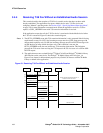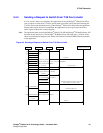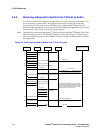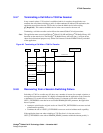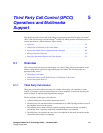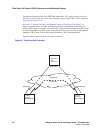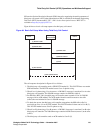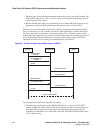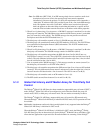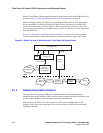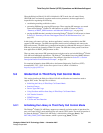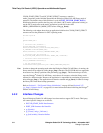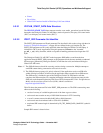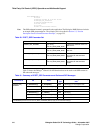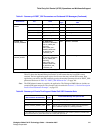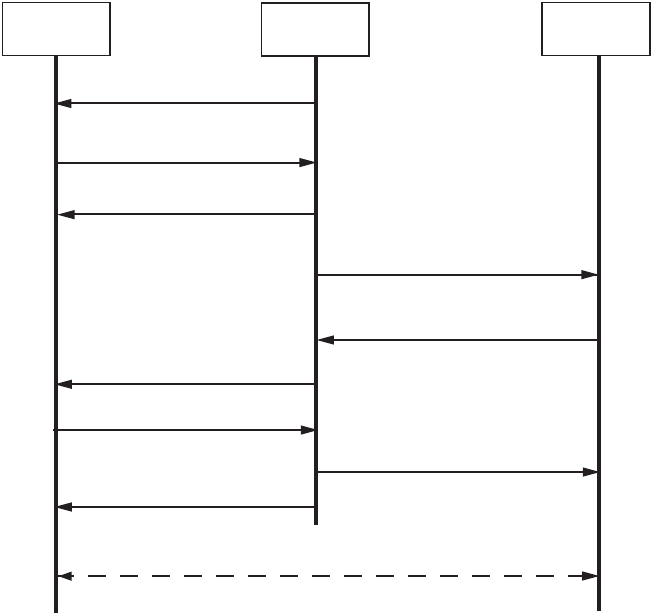
340 Dialogic
®
Global Call IP Technology Guide — November 2007
Dialogic Corporation
Third Party Call Control (3PCC) Operations and Multimedia Support
7. The third party call controller then encapsulates the answer (answer1) in an ACK method. This
ACK method is then sent to User A (6). User A has now received the ACK message that was
required as part of step 3 above.
8. Because the SDP offer (offer1) was generated by User A and the SDP answer (answer1) was
generated by User B, the RTP (media stream) flows between User A and User B (7).
While the call scenario described in Figure 64 is useful for explaining the fundamentals of third
party call control call, it is not a realistic call scenario. Most significantly, it assumes that User B
will answer the phone. If User B does not answer the phone, User A will never receive an ACK
from the third party controller. This results in a time-out problem that will eventually cause the call
to fail. Figure 65 describes the fundamentals of a more realistic example, using re-INVITE (a
subsequent INVITE on an active dialog) to establish third party call control:
Figure 65. Third Party Call Control Setup using re-INVITE
The call sequence description for Figure 65 is as follows:
1. The third party call controller sends a SIP INVITE method (1) to User A. This INVITE
contains an SDP offer (offer1), but the offer does not provide a media level description (no m
lines in the SDP message body) for the session. This implies that the media session will
eventually be coordinated via a re-INVITE at a later time. The initial INVITE method causes
User A’s phone to ring.
User B
Third Party
Call Controller
User A
(1) INVITE offer1
no media
(2) 200 OK answer1
no media
(3) ACK
(4) INVITE no SDP
(5) 200 OK offer2
(6) INVITE offer2'
(10) RTP (media stream)
(7) 200 OK answer2'
(8) ACK answer2
(9) ACK



